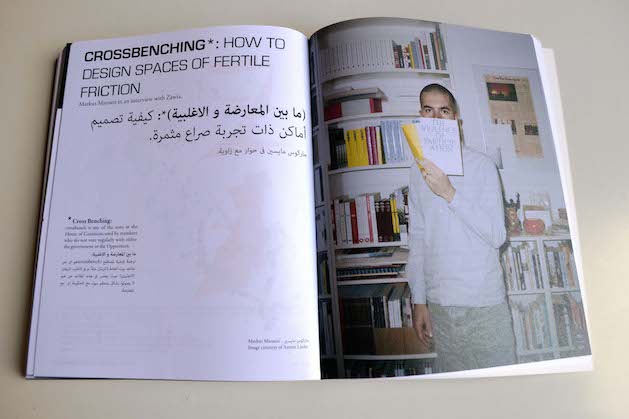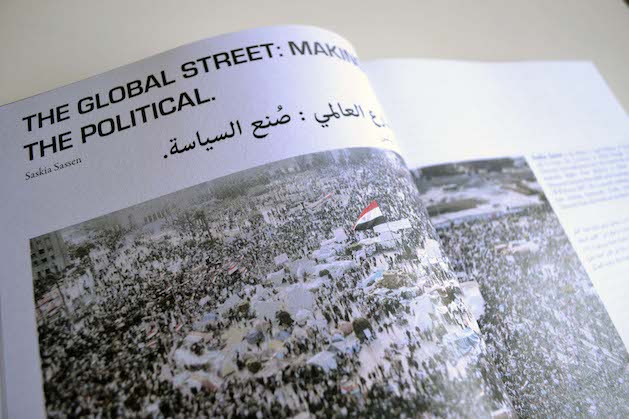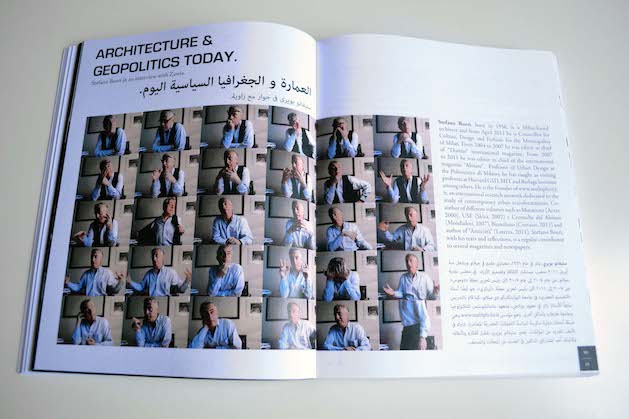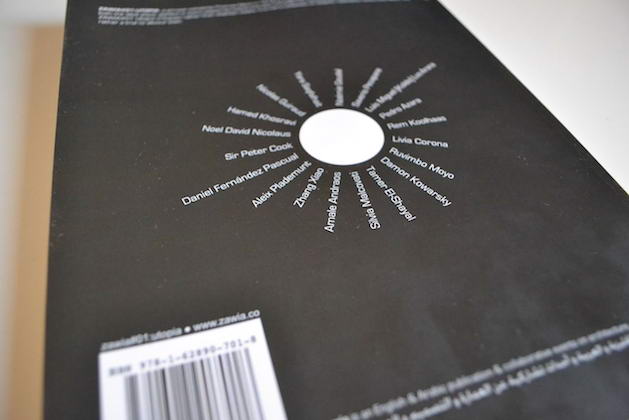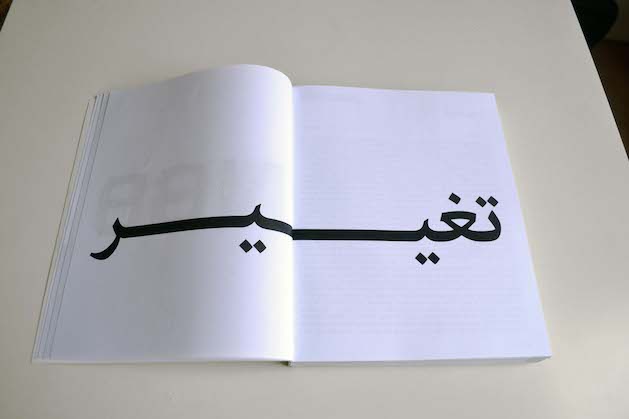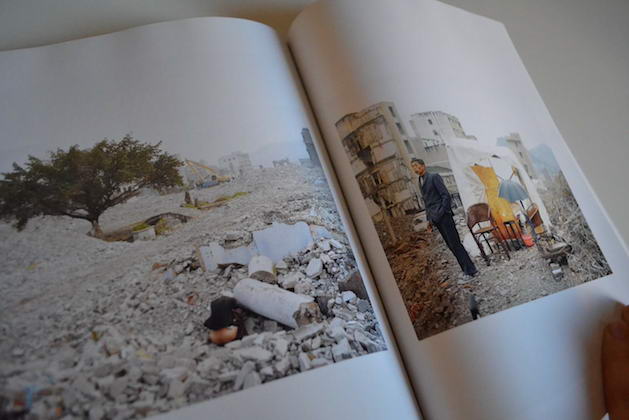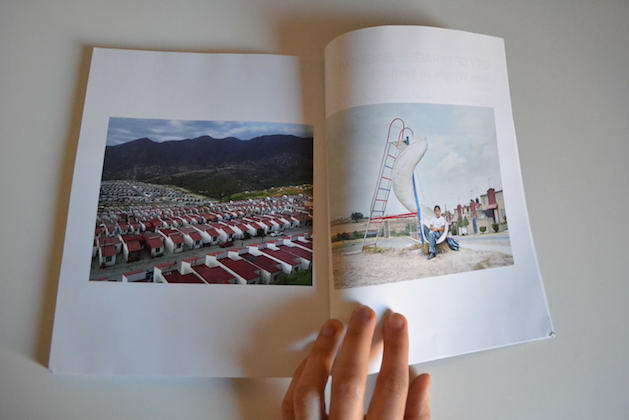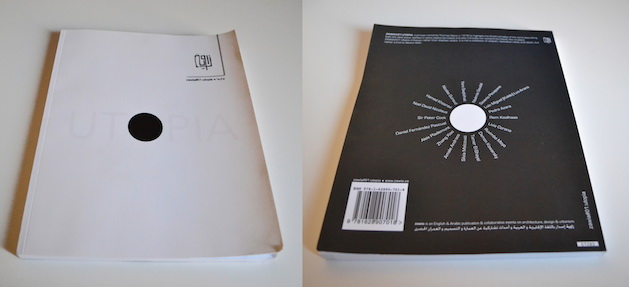
Egypt Zawia magazine is a prominent emerging publication, and an online forum, on design, architecture and urbanism centered around the Middle East. The five core team members are Mazin Abdulkarim (Cairo), Moataz Faissal Farid (Milan), Ahmed Gamal (Brighton), Kareem Nabil (Cairo) and Ahmed Shawky (london). They are all practicing architects who have completed their studies in Europe between Germany, Italy and the UK. They had researched and written extensively about architecture and urban issues before coming together before launching the magazine. Interview with co-founder Mazin Abdulkarim
Baron: ZAWIA bio…
Mazin Abdulkarim : Founded in 2011. Zawia was born in a time of significant change, following the Egyptian revolution of 2011 and maturing through the years of the Arab Spring. It is a trial to cope with and absorb a powerful wave of change with all its energies and promises, a trial to bridge years and layers of intellectual distancing and isolation. Hence, Zawia is a trial to provide channels and open new possibilities for a mutual constructive dialogue within its discipline, a trial to re-establish links of relevancy and necessity between the local and the global community. We provide an open platform for the collective knowledge of architectural discourse, a space for questioning, rethinking, examining, and testing, a space that is organic, hybrid and unexpected. Zawia is a hybrid of different locales, positioned between the generic and the specificity of contexts. We have also been featured in some of the world’s most known architectural media platforms. Zawia’s reviews/news/excerpts/calls appeared in Domus, Abitare, Archnet, Archinect, Bustler and Archdaily. Zawia is also represented in the Archizines world tour, and its volumes were exhibited in Milan, Lisbon, Chicago and Shanghai.

B.: How does that translate to an editorial policy?
M.A.: From the editorial side, Zawia keeps the process of ‘call for contributions’ at its center, aiming to avoid the barrier of editorial selectiveness, and achieving its role as an open forum. The core team will publicly share the call for contributions document that describes the theme as we see it, and asks the questions we think should be asked regarding this theme. A deadline for sending abstracts will be indicated in the document, followed by a phase of finalizing the issue with the featured contributors. Contributions are ordered, organized, and graphically edited by the ‘Core Team’ into the publication in English and Arabic. Contributions are selected according to relevance to the theme, and diversity within the continuous line of thought of the volume. Each volume is also complemented by a selected number of invited guest contributors that have a wide knowledge of the volume’s theme, or would have insightful additions to the dialogue happening within the volume. It is important here to state that the opinions, ideas and arguments in each contribution are purely attributed to the author(s). At many times the opinions of the contributors are on opposing sides of the argument which give the volumes a lot of richness and interest.

After publication, each volume of Zawia will be complemented by one or several public events, inviting contributors, collaborators, and the public to engage in and around the volume’s theme. This serves our goals of reaching out to the public and engaging in discussions about architecture, design and of course the city. Zawia has also focused on engaging the public by making the volumes available in digital formats. This has proven to be very useful and has a very wide impact.
B.: Why choose print? What kind of paper you use and why?
M.A.: For us at Zawia, print is a very crucial part of our existence. It is the basic traditional way to reach out to interested individuals with a presentable and life-lasting product. Although digital and online platforms are very efficient, and although we utilize them as well, but we all have a fascination with printed material.
Zawia is currently available worldwide in print through the print on demand service “peecho.com”. This provides a wide variety of customizable options such as paper quality according to the desired price. Our layout and page design is a very exhausting process as we juggle several types of content such as diagrams, photos and text in two different languages. We try to keep the volume graphically and visually stimulating and exciting without compromising the integrity of the design or the continuity of the overall graphical theme. Graphically we try to keep things simple and basic. Reducing all components to the basics helps us focus on the desired message that we would like to send. The same happens with typography, we always prefer simple and clear for both languages English and Arabic.

B.: What has been the readers’ response?
M.A.: Public response to the presence of Zawia has been very positive. The Middle east and Egypt in particular has a very active design and architectural community but lacks good publications that represent it. The amount of design and architectural production in the area, whether physical and material production or the production of thought, is tremendous and can make huge additions to worldwide practice. The debut volume of Zawia under the theme of “Change” was made available online and we were surprised that it achieved more than 20000 reads. For us this meant that there is a wide interest from the Arab readers as well as readers from all over the world to learn, share, discuss and participate in this new open platform that we were trying to provide. Our second volume Zawia#01:Utopia received over 200 requests for proposed contributions, while we unfortunately could only select 10. Our events have also been received with great admiration and participation from the public. Renowned architects and authors have praised Zawia on many different occasions. With every volume, Zawia is growing and reaching out to more and more interested readers. We hope that we are able to keep up to this responsibility and keep Zawia an open possibility for all.

B.: Business: Good print mags get a lot of love, but is not always translated to sales or advertising. How’s the sales? Advertising wise, is it a normal approach of selling an ad page or more a brand ad approach?
M.A.: Zawia is a fairly new publication and it is difficult now to evaluate its success as a business. The business side of the publication is a very tough and tricky issue because of how delicately it should be handled. Finding a suitable business model that works for Zawia took a lot of researching, studying and trials. Of course, advertising was not a powerful option at the beginning and we had to find other ways to finance the publication. In general, the team working on Zawia volunteer their time and effort which makes things a little easier financially but is not sustainable on the long run. As we grow we are looking further to increase our advertising strength and reach. We also focus on a strong online presence that can help our business model thrive.

B.: Upcoming projects
M.A.: Zawia is now accepting abstracts for its upcoming volume titled Zawia#02:Sacred planned to be published by the end of 2014. The aim of the volume is to put in focus a contemporary understanding of the ‘Sacred’ from a spatial and physical angle. It will aim to define a new role of the ‘Sacred’ in today’s built environment as well as trying to trace the influence of the ‘Sacred’ on societies in a globalized world. It will open a debate revolving around the ‘Sacred’ influence on dynamics of today’s contemporary architecture and cities. The call for contribution and the theme statement can be downloaded at this link
We currently working on an arabic version of its previous volume Zawia#01:Utopia for release in Egypt only.

